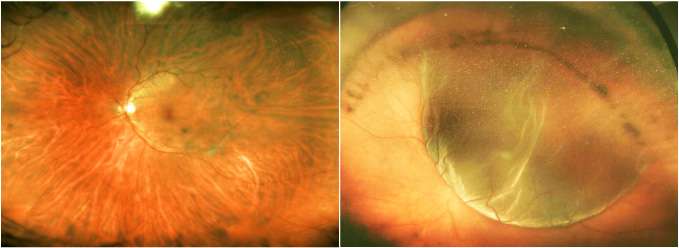Preserving photoreceptor cells following retinal injury

Vision researchers at Massachusetts Eye and Ear/Harvard Medical School (HMS) Department of Ophthalmology have taken a first step in solving a vexing problem: how to preserve photoreceptor cells and avoid irreversible vision loss in patients following retinal detachment.
Degeneration of photoreceptors, the major light-sensing cells in the eye, is a primary cause of vision loss worldwide. Identifying the underlying causes surrounding photoreceptor cell death is paramount in order to develop new treatment strategies to prevent their loss. Retinal detachment and subsequent degeneration of the retina can lead to progressive visual decline due to photoreceptor cell death. Since photoreceptors are non-dividing cells, their loss results in irreversible visual impairment even after successful retinal reattachment surgery.
New research led by Kip M. Connor, Ph.D., a researcher and Assistant Professor of Ophthalmology at Mass. Eye and Ear/HMS Ophthalmology and colleagues analyzed innate immune system regulators in the eyes of human patients with retinal detachment and correlated their findings in an experimental model. They discovered that there was a significant increase in the immune system's 'alternative complement pathway' following retinal detachment and that this pathway facilitated early photoreceptor cell death after injury. Injured photoreceptors lose important proteins that normally protect them from complement mediated cell death, allowing for selective targeting by the alternative complement pathway. Additionally, by blocking the alternative complement pathway, through both genetic and pharmacologic means, photoreceptors were protected from cell death. "When photoreceptors in a detached retina were removed from their primary source of oxygen and nutrients, we found an increase in complement factor B?a key mediator of the alternative complement pathway that leads to photoreceptor cell death," says Dr. Connor. "For the first time these results provide evidence that the alternative complement pathway exacerbates photoreceptor cell death and that inhibition of the pathway is protective," said Kaylee Smith, a member of the Connor Lab and contributing author on the manuscript. Their findings were published today in the journal, Science Translational Medicine.
Retinal detachment can occur as a result of either blunt trauma or as a side effect of a variety of eye diseases, including diabetic retinopathy, ocular tumors, and age-related macular degeneration. The current standard of care is surgical reattachment, with patients in the United States and Europe typically treated within one week of the injury. Today's state-of-the-art surgical techniques are highly effective at physically reattaching the retina and?if surgery is timely?a positive, visual outcome often results. Even so, patients often complain of permanent vision loss accompanied by changes in color vision. "Studies in both humans and animal models have shown that photoreceptor cell death is induced as early as 12 hours after detachment, indicating that early intervention could potentially preserve photoreceptors and improve the visual function of patients who undergo reattachment surgery. Our research provides a new role for complement in retinal detachment, and suggests that inhibition of the alternative complement pathway may be good therapeutic target to prevent the initial photoreceptor cell loss," notes Dr. Connor.
"What makes this research so exciting is the potential impact it can have on our patients," he adds. "Working closely with our colleagues in the clinic, we identified a challenging issue, went back to our laboratories to uncover a cause, and now have knowledge that may help us to develop therapies that will help to preserve our patients' vision."
-

Mass. Eye and Ear/HMS Researchers discovered that there was a significant increase in the immune system's 'alternative complement pathway' following retinal detachment and that this pathway facilitated early photoreceptor cell death after injury. Additionally, by blocking the alternative complement pathway, through both genetic and pharmacologic means, photoreceptors were protected from cell death. Credit: Connor Lab, Mass. Eye and Ear/HMS Ophthalmology -

Mass. Eye and Ear/HMS Researchers discovered that there was a significant increase in the immune system's 'alternative complement pathway' following retinal detachment and that this pathway facilitated early photoreceptor cell death after injury. Additionally, by blocking the alternative complement pathway, through both genetic and pharmacologic means, photoreceptors were protected from cell death. Credit: Connor Lab, Mass. Eye and Ear/HMS Ophthalomogy

















